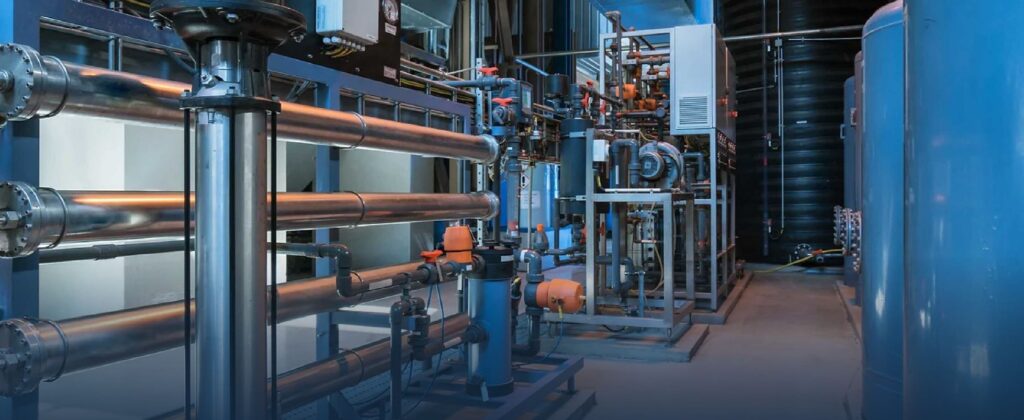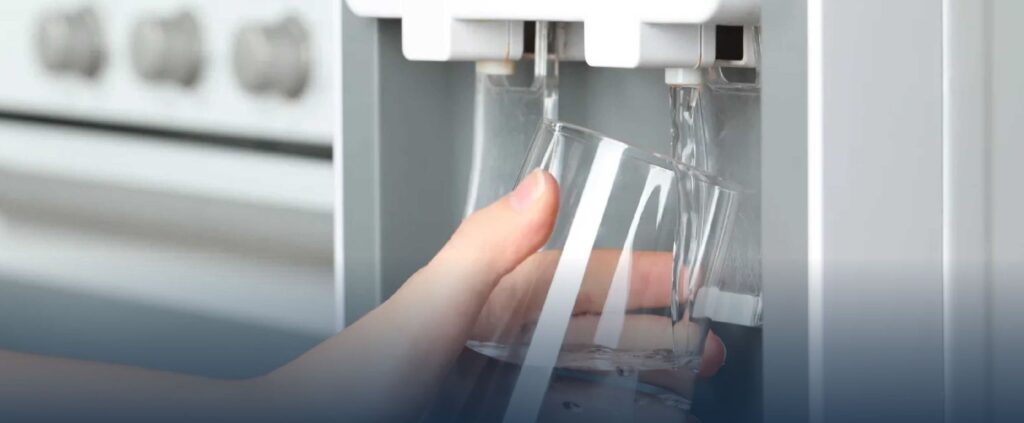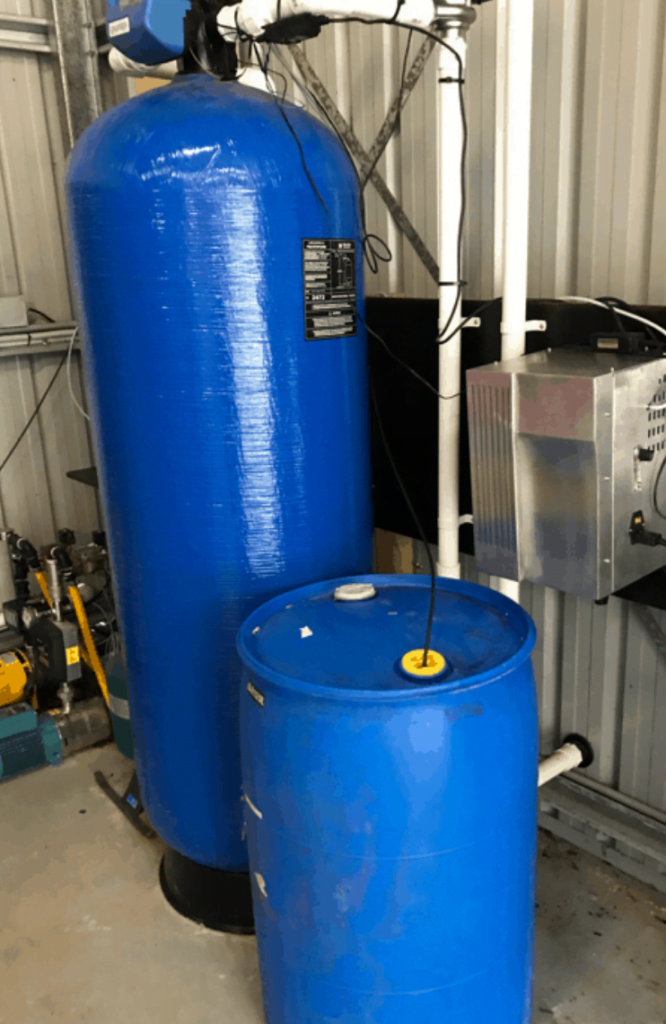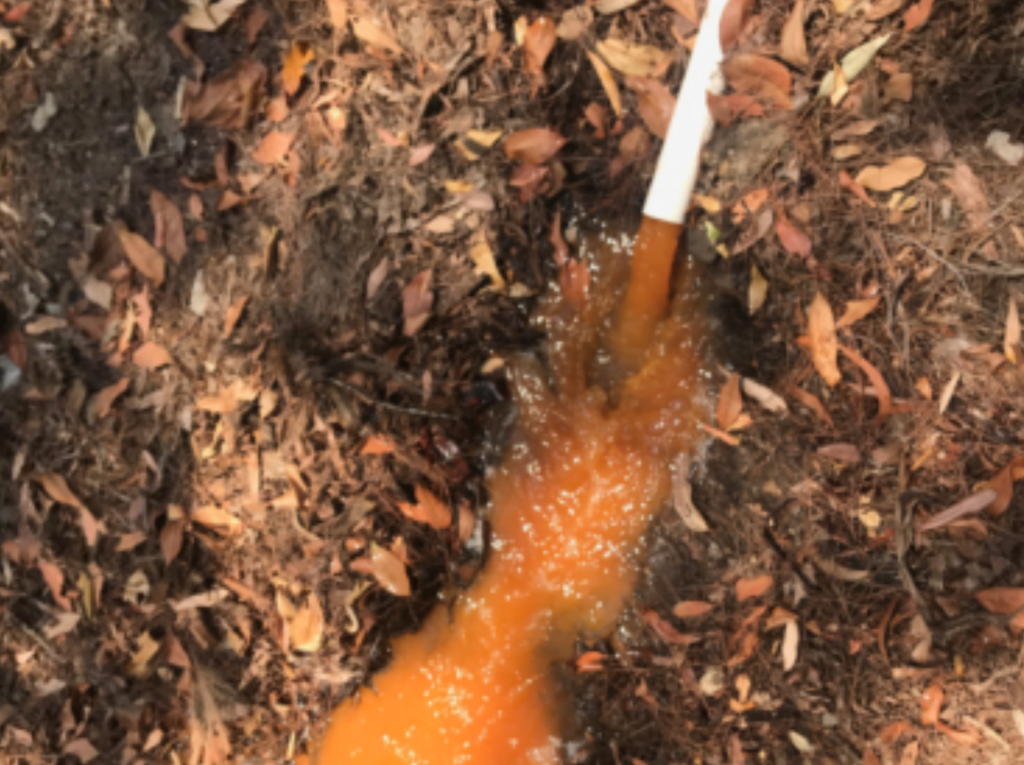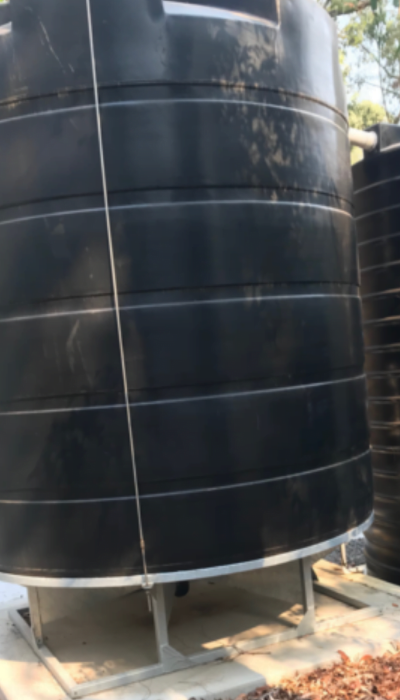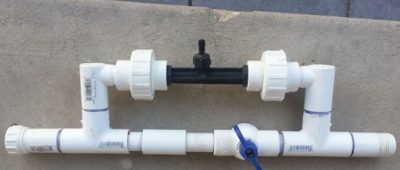~ CHANDLER ~
Removal of High Levels of Iron from Bore Water
Pacific Water Technology recently commissioned a bore water treatment facility for the removal of high levels of iron. This particular case posed significant challenges as the iron levels exceeded 80 ppm (mg/L) along with the bore water being extremely acidic. The pH levels recorded were as low as 3.5, meaning that iron would continue to remain the solution even after passing through a catalytic filter. After the proposed treatment was put in place, a final pH level of 7.9 was achieved post filtration along with iron levels less than 0.5 ppm.
[Catalytic Iron Removal Filter, Ozone Generator & Caustic Tank]
In order for iron to be removed from the bore water, it needs to be oxidised with air or another oxidant. Thus, the ferrous iron is oxidised into ferric iron, which precipitates in iron hydroxide – Fe (OH)3. The precipitate is then separated from water by precipitation and settling, followed by a catalytic manganese greensand filter. The stage of precipitation by chemical oxidation can also be carried out with the stronger oxidants such as Chlorine Dioxide (ClO2), Ozone (O3), or Potassium Permanganate (KMnO4).
The steps adopted in this case were as follows:
- pH correction using caustic solution to stabilise pH levels exceeding 8.5
- Ozonation via venturi injector
- Settling in a conical tank
- Secondary settling tank
- Catalytic manganese filter (35% MnO2) with automated backwash
Due to the high iron levels in the water, sufficient alkalinity has to be added to offset the decrease in pH when Fe (OH)3 is precipitated out of the solution. The precipitation of Fe (OH)3 means that the water pH will drop, inhibiting any further iron oxidation. As the caustic solution is added to the water, the low oxygen environment results in green discolouration. Once ozone is added via the venturi injector, the water eventually turns a dark orange colour. The ozone was produced using an oxygen source ozone generator providing a concentration of over 10% ozone, and also high levels of oxygen.
Most of the oxidised iron was removed in a two-stage settling process – the first stage with a conical tank to allow the sludge to be readily drained on an intermittent basis. The water is transferred via an overflow channel into the second settling tank.
[Bore Water Changes to a Green Colour]
[Settling Tanks]
The remaining iron was removed in the catalytic filter which is made of a 24″ filter vessel, manganese greensand media and a Clack automated backwash control head. Filtration occurred at a relatively low water flow rate of 25 litres per minute. the backwash flow rate was in excess of 140 litres per minute at a minimum pressure of 4 bar. The backwash flow rate is critical to ensure proper separation of the iron sludge from the media bed. The filtrate was transferred to two storage tanks, enabling the irrigation pump to feed the sprinklers at much higher flow rates.
[Backwash Waste Stream from Filter]


